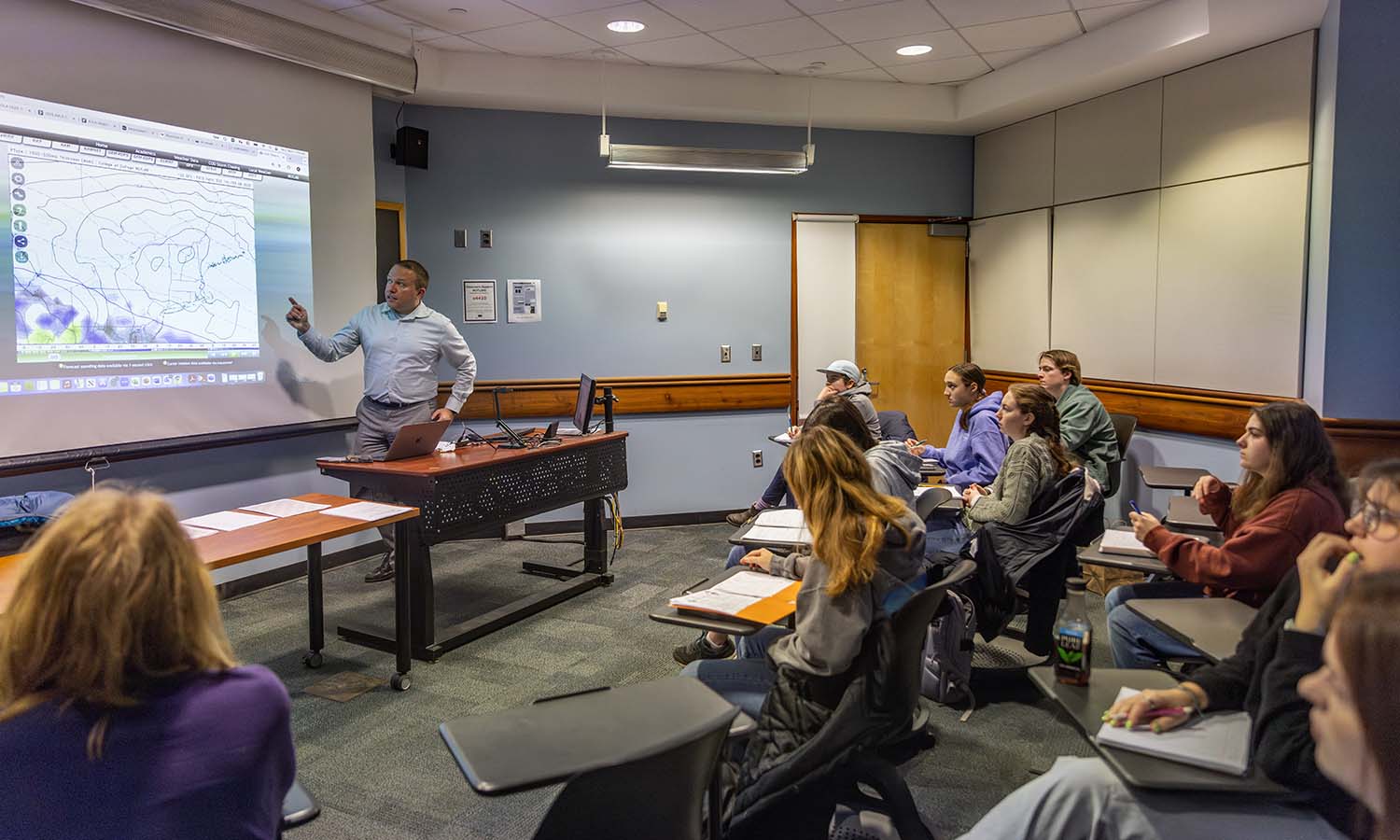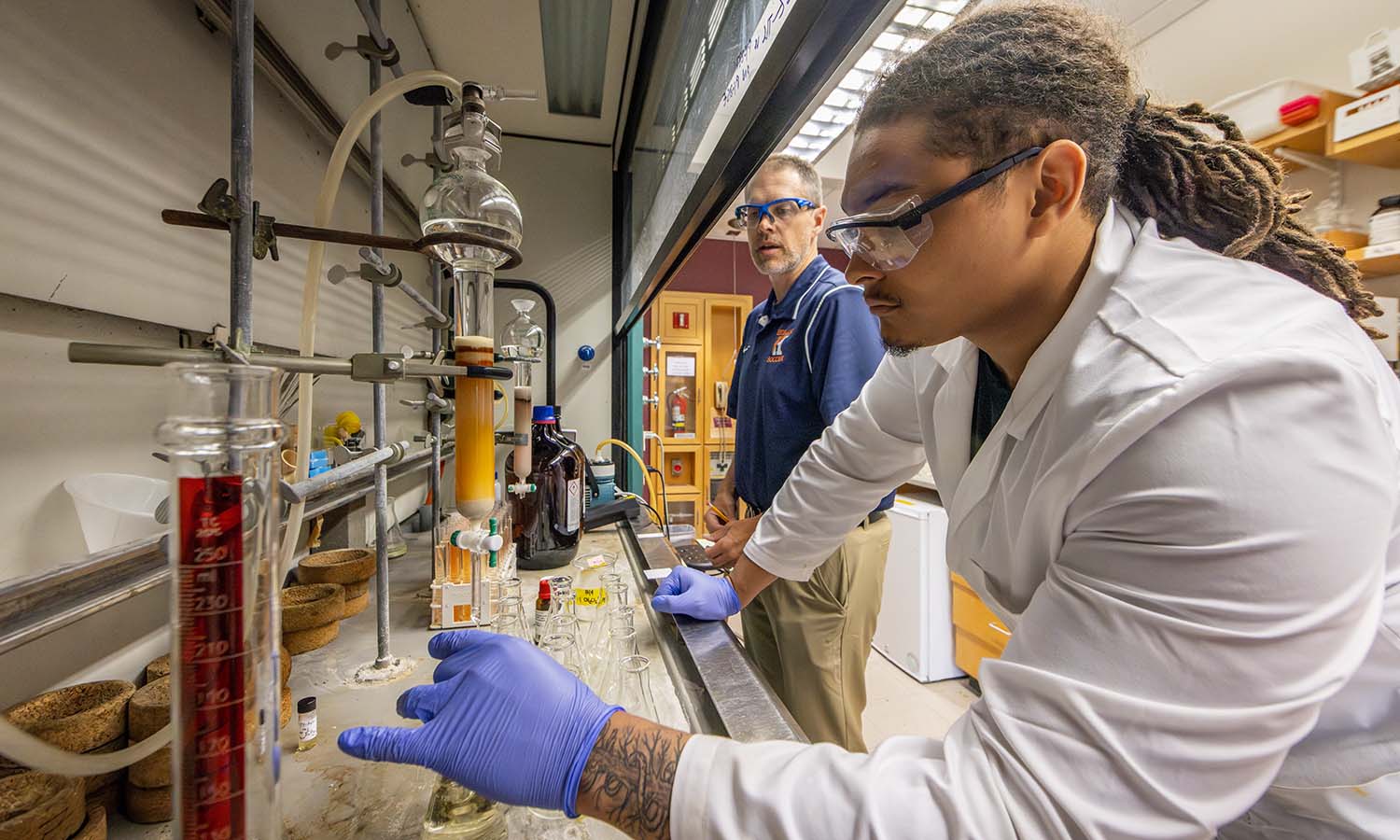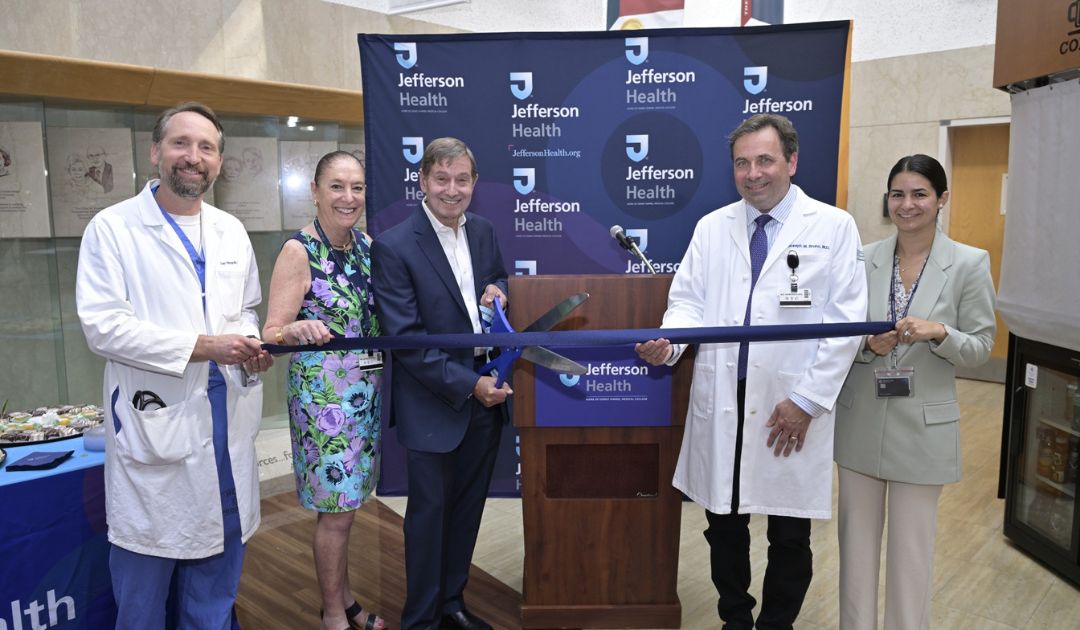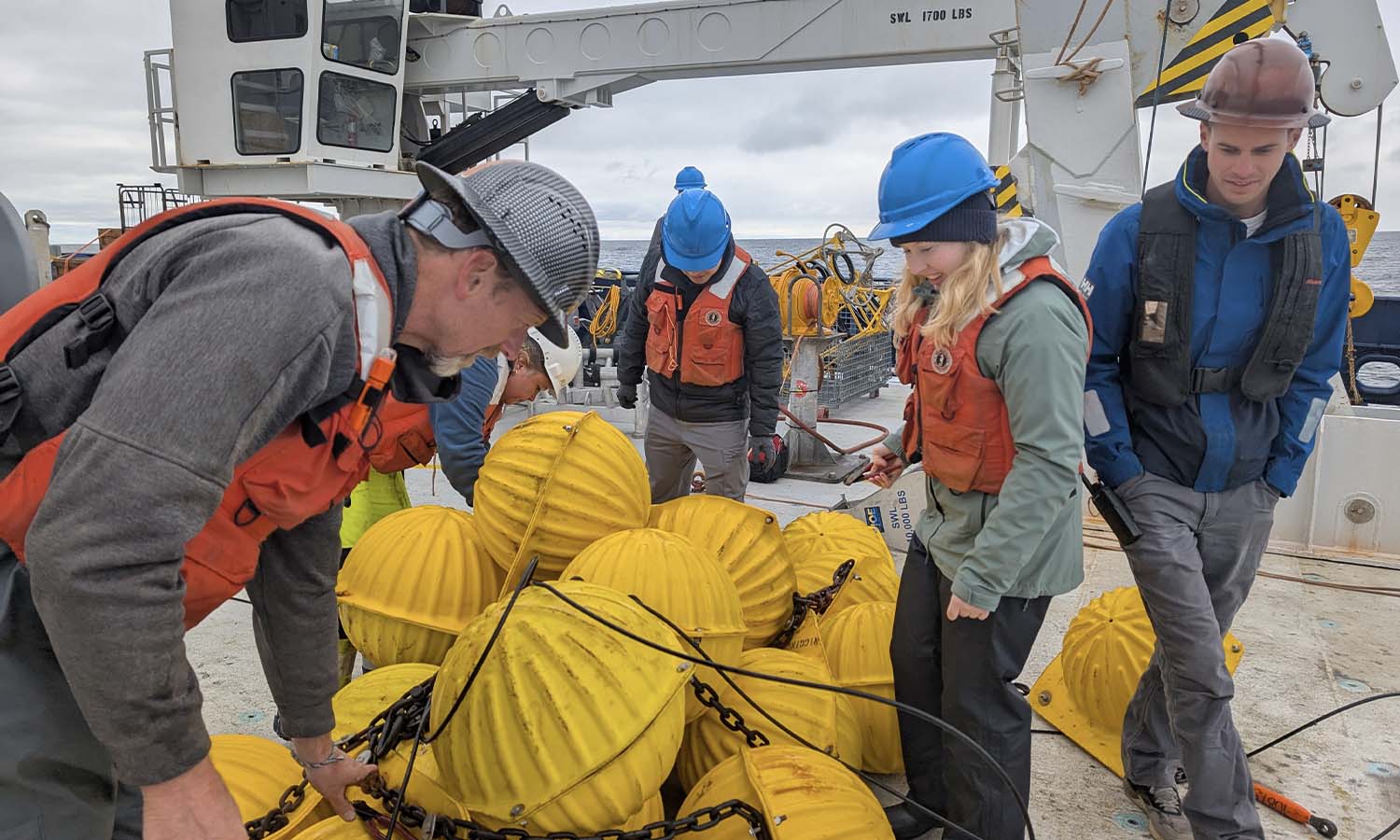
HWS News
22 October 2025 From Seneca Lake to the North Atlantic
Fiona Howes ’27 charts a future in oceanography.
Somewhere between Iceland and the Faroe Islands, while gripping her dinner plate to keep it from sliding across the table in 20-foot swells, Fiona Howes ’27 realized she was exactly where she belonged.
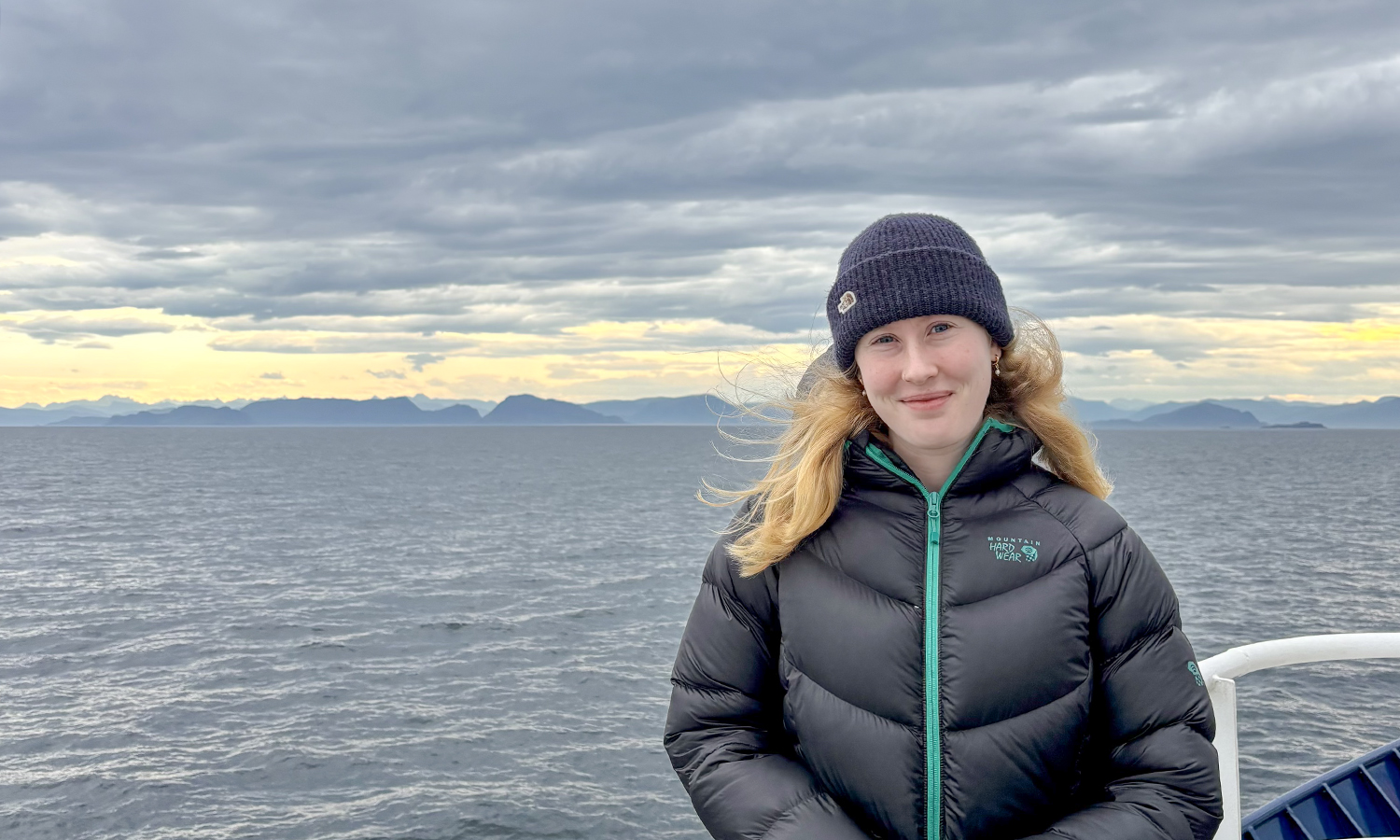
The Geoscience major returned to campus three weeks into the semester. She returned to harbor at the Faroe Islands on Sept. 18, after spending a month aboard the R/V Roger Revelle — a 273-foot research vessel owned by the Scripps Institution of Oceanography — assisting scientists as they deployed instruments deep into the North Atlantic. The work was part of a project studying how dense Arctic water moves southward through underwater channels, influencing the massive global conveyor belt of ocean circulation that regulates Earth’s climate.
With a crew of 21 and a rotating science team of 15 to 20, Howes was one of the youngest aboard. The team worked in shifts, spending the first few days retrieving ocean moorings that had been deployed a year earlier.
Before boarding the research vessel in August, Howes spent a month in Massachusetts at the Woods Hole Oceanographic Institution, the largest independent oceanographic research institution in the U.S. There, she analyzed decades of hydrographic data on the North Icelandic Jet, a deep ocean current that may be warming with climate change. Now that she is back at HWS, Howes is continuing that data analysis as an independent study this semester.
The institute is dedicated to the study of marine science and engineering and gave Howes a chance to experience oceanographic research firsthand.
Howes had secured a position working under Robert Pickart, a senior scientist in physical oceanography, known for his attention to detail. Once at sea, she joined a rotating crew of scientists under Pickart. Over three weeks, they conducted 350 casts, lowering large sensor arrays up to 3,000 meters below the surface to measure conductivity, temperature and depth in real time.
“It was unbelievable how much data you can collect when you're out there every day, surveying these systems directly,” she says. “Everything I’d learned in class at HWS — suddenly it wasn’t theoretical anymore.”
Howes isn’t certain where her path will lead — whether into climate modeling, marine instrumentation or current dynamics — but she knows it will be on the ocean.
“I’m just incredibly excited to keep asking questions,” she says. “This experience showed me that I want to be out there, helping figure out how our planet is changing.”
This year Howes was named a recipient of the Ernest F. Hollings Undergraduate Scholarship, the nation’s premier award for students pursuing careers in oceanic and atmospheric research. With the award, she joined an elite cohort of undergraduates across the country selected by the National Oceanic and Atmospheric Administration for their academic excellence and research potential.
At HWS, Howes pairs her Geoscience and Biology coursework with wide-ranging campus involvement. She is vice president of the Geoscience Club, a Teaching Assistant for “Introduction to Hydrogeology,” a First-Year Mentor, a member of the Food Recovery Club and a runner on the William Smith cross country team. Yet when she came to HWS, she had no intention of becoming an ocean scientist.
“I thought I wanted to go into medical science,” she recalls. “Then I took a class called “Parched” with (Associate Professor of Geoscience) Tara Curtin and it completely shifted my perspective. I realized how central water is to everything — past, present and future.”
Top: Fiona Howes '27, second from right, dismantles part of a recovered mooring deployed in August 2024.

